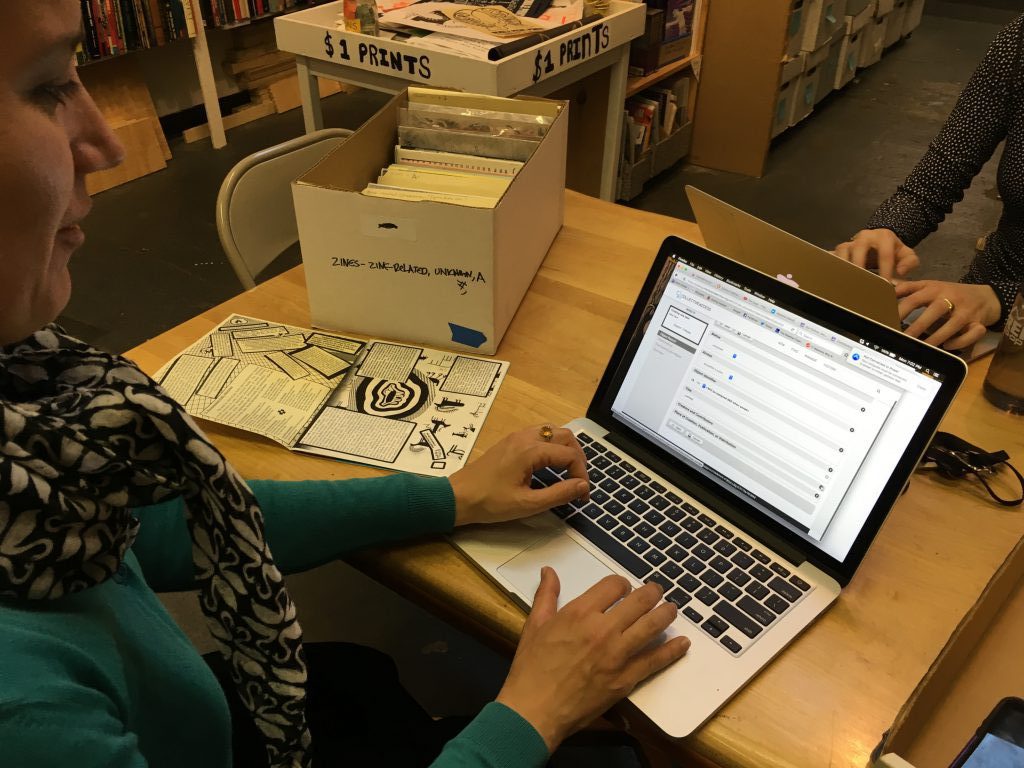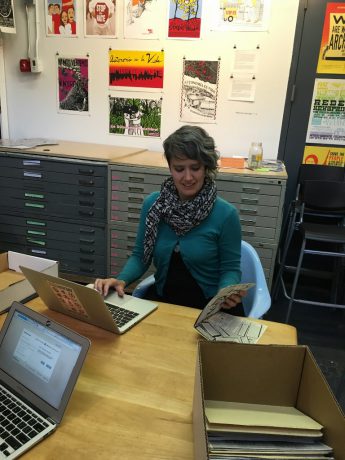Volunteering at Interference Archive: the evening shift
May 31, 2016

For those of you who don’t get to visit Interference Archive regularly, we thought we would start a series of short posts about what we do as volunteers. This post was shared by volunteer Michele Hardesty.
If you’re interested in volunteering at Interference Archive, check out our website for info on how to get involved, or email info@interferencearchive.org. You can also support the amazing work of all our volunteers by making a financial donation.
 After several years of coming to Interference Archive events, and even doing a bit of work in the collections, I became a sustaining contributor last fall, and then I began staffing the Thursday evening shift.
After several years of coming to Interference Archive events, and even doing a bit of work in the collections, I became a sustaining contributor last fall, and then I began staffing the Thursday evening shift.
Evenings at Interference are often busy with meetings, events, and installations, but Thursday is the only evening when there are open hours at IA. (Open hours happen 1-9, and Friday-Sunday 11-5). Open hours are just what they sound like: times the archive and its exhibitions are staffed by volunteers and open to visitors.
Visitors can come to 131 8th St. and ring the buzzer at the top of the stairs, or they can send an email ahead of time and a volunteer will meet them at the entrance without stairs. When visitors come by, I let them in, tell them about the archive and its history, introduce the current exhibition, and, if they are researchers, help them find materials. Sometimes there are events on Thursday night, in which case I’ll help set up chairs, sell merchandise (we have fabulous tote bags!), and keep the archive room open while the event is happening. When I’m not hosting visitors, I process and file new donations….and quite often I indulge in what we call “internal education”—exploring the collections myself!
Early this year, I started hosting “cataloging parties” on Thursday nights, with the help of fellow volunteers Jen Hoyer and Drew Gordon. What “cataloging” means in this case is making digital records of our holdings for the online catalog that launched this past year. Right now the online catalog represents only a fraction of our collection. However, as we populate it, the catalog will make it easier for researchers to find things in the collection, and it will make our holdings accessible beyond the physical space of the archive. At the same time, opening the process of cataloging to all volunteers is another way in which we practice community archiving.
An archive is not just the materials it holds—it is also the process of accepting donations, classifying donated items, filing these items in the physical space of the archive, and producing metadata for a digital catalog record. In many institutional archives, this process is deeply hierarchical and controlled. For me, a key part of community archiving is about opening up and challenging conventional classifications schemes and subject terms we use to organize our donated collections and make them available to community researchers.
If you’d like to get involved with our next cataloging party, or with any other aspect of volunteering, send us an email!